Found 8 Results
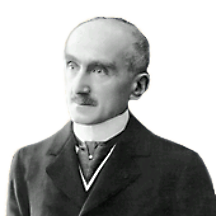
Bergson Henri
Henri Bergson was born in Paris in 1859. At the age of thirty he published his work on the meaning of time and freedom and became a famous and much admired philosopher.
Henri Bergson was awarded the 1927 Nobel prize for literature “in recognition of his rich and vitalizing ideas and brilliant skill with which they have been presented”.
In his teachings, he made a distinction between the conceptual notion of the external reality and the immediate intuitive consciousness that is reveal to us from within, which for him was the only means of understanding life and time.
Despite his attraction to Catholicism, he refused to be baptized and to cut his ties with the fate of the Jewish people at the time of persecutions; on the eve of his death, he insisted on registering as a Jew at Paris police station.
Henri Bergson died in 1941.

Cassin Rene
Rene Cassin was born in Bayonne, France in 1887. In 1914, he received his Ph.D. degree in judicial, economic and Political Sciences.
On that year, World War I broke. Cassin, who was severely injured in battle, learned a human lesson from his personal suffering, and dedicated his life to the benefit of all people.
In addition to his activity for the benefit of war-disabled and orphans, Cassin represented France in international institutions; initially in the League of Nations and later on in the United Nations. During World War II, Cassin joined De Gaulle’s Government in exile, and handled the arrangement of the status of “Free France”.
In light of the horrors of World War II, Cassin placed his judicial knowledge at the service of the United Nations Commission on Human Rights. His greatest contribution was expressed in the drafting of the majority of the sections of the Universal Declaration on Human Rights.
In 1968, Rene Cassin was awarded the Nobel Peace Prize for his persistent struggle against the oppression and injustice prevailing in the world.
Cassin also acted in the service of his people: he served as the President of the Alliance Israelite Universelle and assisted in the rehabilitation of Jewish communities throughout the world.
Rene Cassin died in 1976 at the age of 89.

Charpak Georges
Georges Charpak was born in 1924 in the little Jewish town of Sarny, Ukraine. He was 8 years old when his family emigrated to France. During the German occupation of France, Charpak joined a leftist group of resistance, was arrested in 1944 and deported to Dachau camp. He was liberated in 1945, being only 21. He started working in the “National Center for Scientific Research” in which he obtained his PhD. in experimental nuclear physics.
In 1957, Charpak published, at first, his ideas about detectors of particles; but his colleagues were not yet ready to exploit his proposals. In 1959, he joined the Leon Lederman team at CERN (The “European Organisation for Nuclear Research”) in Geneva to measure the magnetic moment of the muon. Since then, he didn’t leave this Center, forming his own team, pioneering in development of particles’ detectors.
In 1992, Georges Charpac was awarded the Nobel prize in physics “for his invention and development of particle detectors, in particular the multiwire proportional chamber”.
This invention made it possible to increase the data collection speed for registering charged particle trajectories and interactions. The development of detectors goes hand in hand with the general scientific progress. During the last two decades, various types of particle detectors based on Charpak’s original invention have been of decisive importance for many discoveries in physics, with various applications in medicine or biology.
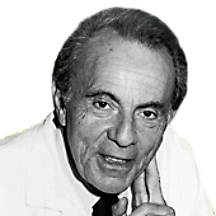
Jacob Francois
Francois Jacob was born in Nancy, France, in 1920 in a family of merchant. His medical studies in the Paris University came to an end in 1940 with the invasion of France by the Germans; Jacob joined the “Free French” and served as a medical officer. His hands were severely wounded; so he understood he will never realized his dream to become a surgeon.
In 1947, he received his medical degree at the Sorbonne and devoted his doctoral research to the genetics of bacteria. He started working at the Pasteur Institute and in 1960 he was nominated director of the Genetics Research Department.
In 1965, Francois Jacob was awarded, together with Lwoff and Monod, the Nobel prize of physiology and medicine “for their discoveries concerning genetic control of enzyme and virus synthesis”.
Jacob and Monod discovered the messenger-RNA molecule which transmit the information encoded in the DNA loaded in the cell nucleus – from the nucleus to the cell cytoplasm. There, with the help, among others, of two RNA, a new protein molecule is manufactured which fits exactly the code initially inscribed on the DNA.
Furthermore, Jacob and Monod differentiated two types of genes: the structural genes which are bearing all characters and information of a cell; and the regulatory genes which influence the rate of expression of each one of the structural genes. The regulatory genes can be influenced by internal stimuli of various sorts and, also occasionally, by external factors such as heat, radiation, and so on. Thus can explain diverse phenomenon such as burst of certain cancerous tumors and the sudden outbreak of viral diseases such as Herpes and Aids.
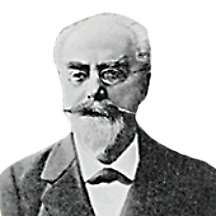
Lippmann Gabriel
Gabriel Lippmann was born in 1845 in Luxembourg. In 1875, he was awarded a doctorate in physics at the Sorbonne University, Paris, and became professor of mathematical physics. Lippmann also served as chairman of the experimental physics department. In 1912, Lippmann was elected President of the French Academy of Science.
Gabriel Lippmann was awarded the 1908 Nobel prize in physics, for the development of the technique of color photography, based upon the phenomenon of light interference.
Lippmann placed a sheet of glass coated with a light-sensitive emulsion In front of the object to be photographed. Then, he created with the aid of a mirror a collision between the light waves comming from the oposite directions. Thus, the interference of light was captured on the photographic sheet of glass, as intermittent light and dark bands. The distance between the bands was determined by the color of the light that produced them.
When one looks at such a photograph, the interference is recreated, but this time in the eye of the observer, who enjoys the colorful picture of the object.
Although it was color photography that gained Gabriel Lippmann world recognition, his other scientific achievements are no less important. He developed various instruments, engaged in seismography and astronomy, and even submitted an significant thesis on electron research.
Gabriel Lippmann passed away in 1921.
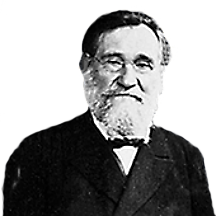
Mechnikov Ilya
Ilya Mechnikov was born in the Ukraine in 1845. He received his Ph.D. from the University of St. Petersburg and joined the staff there as a lecturer in Zoology and Anatomy. Later he moved to the University of Odessa, but following the persecution of the Jews after Czar Alexander’s murder, he left Russia and moved to Italy, and then to Paris, to the Institute Louis Pasteur. Mechnikov died in 1916 at the age of 71.
Ilya Mechnikov was awarded the 1908 Nobel prize in physiology or medicine together with Paul Ehrlich, “In recognition of their work on immunity.”
In observations that he made on transparent fish, Mechnikov noticed cells surrounding and swallowing foreign bodies that had entered the fish, with the intent of destroying them. He called these cells Phagocytes – devouring cells.
On the basis of this observation Mechnikov claimed that disease is actually a battle between foreign bodies, such as bacteria, and auto-policing cells. Cure of the body is achieved following the victory of the policing cells, and immunizing the body prevents the renewed outburst of the bacteria.
Mechnikov was the first to claim that devouring cells have an additional role: to engulf and destroy normal tissue that the body no longer needs.
Ilya Mechnikov’s discoveries on the role of the devouring cells have formed the basis for many immunological studies, and have changed the way we perceive the body’s struggle with disease.
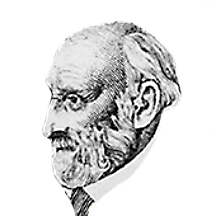
Moissan Henri
Henri Moissan was born in Paris in 1852.
He received the 1906 Nobel prize in chemistry “For the investigation and isolation of the element Fluorine, and for the invention of the electric furnace called after him.”
Henri Moissan passed away in 1907.
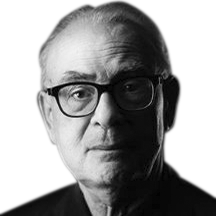
Patrick Modiano
When memories die out and buried in the soil of forgetfulness – there comes Patrick Modiano from the darkness, a shovel and a lantern in his hands, and rescues them from the abyss of death.
Jewish-French author Patrick Modiano, winner of the Nobel Prize in Literature in 2014 is referred to as “the archeologist of memories”. His entire corpus of works is about the desperate attempt to try and capture particles of memory, elusive fractions – and bring them alive again.
A restless, strict archivist, Patrick Modiano picks, sorts and organizes his memories. Names of streets, quarters, alleys and anonymous by passers – are the very foundation of Modiano’s art.
He was born in Paris, on November 30 1945. His father was a questionable businessman who walked out on him when he was 5 years old. His mother, “a pretty dreamy woman” as he described her, was unable to raise him and sent him to boarding schools.
When he studies in Henri–IV in Paris, his mother hired the author and matematician Raymond Queneau, who was a friend of hers, as Patrick’s tutor. Queneau encouraged the boy’s literary aspirations and had his first manuscript, La Place de l’étoile, published in 1968.
The detailed review of the city of Paris is an inherent characteristic of each and every one of Modiano’s 30 books, like a tour guide reporting on a city’s curiosities. However in a much deeper level, these specifics alows an illusion of certainty, a grasp onto a concreted reality that helps the author cope with alienation and the pursue of identity.
His stories change their genre constantly: detective fiction, romantic Paris, thriller, and in some cases extremely accurate descriptions, such as the shape of the siluette of the woman wearing a blue dress at a specific angle the sun shines through the windows of the LA CONDA CAFÉ.

free text
Select a Nobel category:
- Chemistry
- Economics
- Literature
- Medicine
- Peace
- Physics
Select first letter of winner's name:
- A
- B
- C
- D
- E
- F
- G
- H
- I
- J
- K
- L
- M
- N
- O
- P
- Q
- R
- S
- T
- U
- V
- W
- X
- Y
- Z
Search Results
Found 0 Results
No search results

region on map
